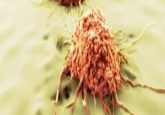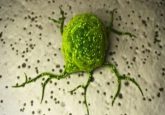Promising preclinical antitumor activity of TAK-733 in melanoma

Researchers at the University of Colorado Cancer Center (CO, USA) have reported anticancer activity in 10 out of 11 patient tumor samples grown in mice and treated with the experimental drug TAK-733, a MEK1/2 inhibitor. The findings were published in the journal Molecular Cancer Therapeutics.
“The importance of this molecule is that it’s a next-generation and highly potent inhibitor of a known melanoma pathway. It was highly effective against melanoma and the method of our study – using patient-derived tumor samples grown in mice – makes us especially optimistic that we should see similar results in the human disease,” commented lead author John Tentler (University of Colorado Cancer Center).
Between 50% and 60% of human melanomas have an activating mutation in the BRAF gene. The drug vemurafenib was approved by the US FDA in 2011 and is currently the drug of choice for patients with BRAF-mutant melanoma. However, while up to ~80% of patients with the BRAF mutation respond to vemurafenib, the response often only lasts for 2–18 months.
“We’re learning how to use existing drugs better, for example RAF along with MEK inhibitors to block both mutations and thus a common mechanism of resistance. But there is also room for improvement in the drugs themselves and we hope that TAK-733 could improve on the results of existing, approved MEK inhibitors,” Tentler explained.
The study utilized melanoma samples contributed by human patients and then grown in mice, known as patient-derived xenografts, which better predict the drug’s effectiveness compared with other current methods. The alternative to patient-derived xenografts is to grow tumors in mice from cancer cells that have previously been cultured on plastic. It has previously been shown that cells that are cultured in this way lose genetic characteristics of the original cancer over time.
“When you grow cells on plastic and inject them into mice, that’s not what a real tumor looks like. Instead, when you take a sample and grow it as a living tumor in a mouse model, you much more faithfully preserve the genetic and tissue landscape characteristics of the original tumor,” Tentler continued.
Tentler suggests that TAK-733 may offer substantial improvements on current BRAF and MEK inhibitors, which justifies its continued development. “There’s always a need for better, more potent molecules.”





